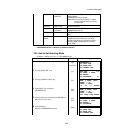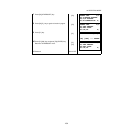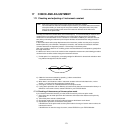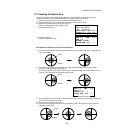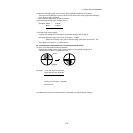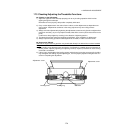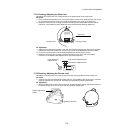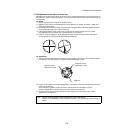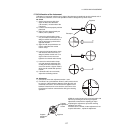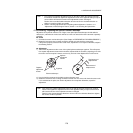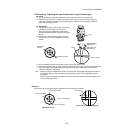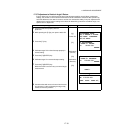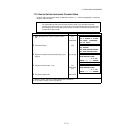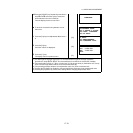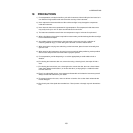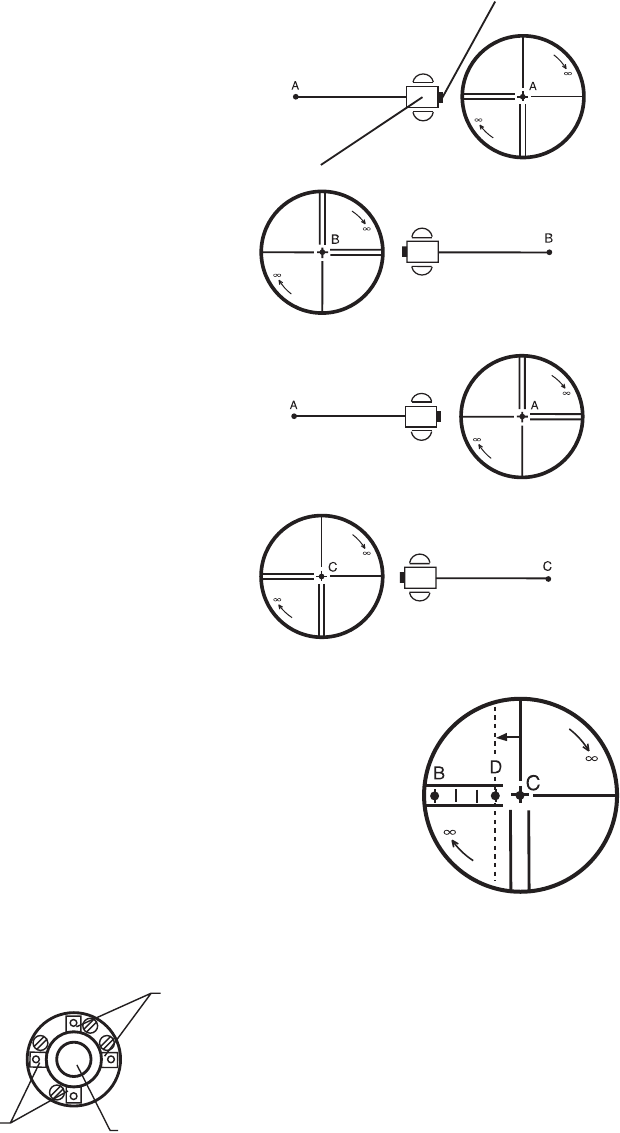
17 CHECK AND ADJUSTMENT
17-7
17.3.4Collimation of the Instrument
Collimation is required to make the line of sight of the telescope perpendicular to the horizontal axis of
the instrument, otherwise, it will not be possible to extend a straight line by direct means.
● Check
1) Set the instrument up with clear
sights of about 50 to 60meters
(160 to 200 ft.) on both sides of the
instrument.
2) Level the instrument properly with the
plate level.
3) Sight Point A at approximately 50
meters (160 ft.) distance.
4) Loosen the vertical motion clamp
only, and rotate the telescope 180° or
200g around the horizontal axis, so
that the telescope is pointed in the
opposite direction.
5) Sight Point B, at equal distance as
Point A and tighten the vertical
motion clamp.
6) Loosen the horizontal motion clamp
and rotate the instrument 180° or
200g around the vertical axis. Fix a
sight on Point A once more and
tighten the horizontal motion clamp.
7) Loosen the vertical motion clamp
only and rotate the telescope 180°
or 200g around the horizontal axis
once more and fix a sight on Point C,
which should coincide with previous
Point B.
8) If Points B and C do not coincide,
adjust in the following manner.
● Adjustment
1) Unscrew the cross-hair adjustment section cover.
2) Find Point D at a point between Points C and B, which should
be equal to 1/4th the distance between Points B and C and
measured from Point C. This is because the apparent error
between Points B and C is four times the actual error since
the telescope has been reversed twice during the checking
operation.
3)Shift the vertical cross-hair line and coincide it with
Point D, by revolving the left and right capstan
adjustment screws with the adjusting pin.Upon
completing the adjustment, repeat the checking
operation once more.
If Points B and C coincide, further adjustment is not
required. Otherwise , repeat the adjustment.
Eyepiece
Telescope
Capstan
adjustment
screws
Eyepiece
Capstan
adjustmen
t
screws



